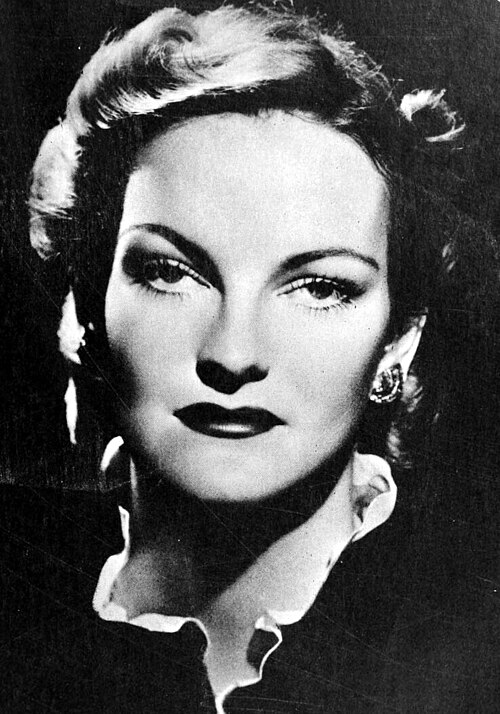Lucky Strike
“Payback is a bitch, baby.”—Doris Duke
As Dorothy made her way along the Yellow Brick Road, she chanted, “Lions and tigers and bears, oh my!” As Doris Duke strode along her estate’s gilded walkway, her mantra could have been, “Alsatian hounds, Alaska malamute, camels, oh my!” Visitors to Rough Point will also gasp, “Oh, my!” when partaking of the mansion’s treasure trove.
Born in Manhattan in 1912 to tobacco tzar James “Buck” Buchanan Duke and his social-climbing second wife, Nanaline, Doris rivaled Queen Elizabeth of England and Queen Juliana of the Netherlands for the title of the world’s richest woman. Home was a five-story Fifth Avenue Greek-revival mansion, currently the site of NYU’s Institute of Fine Arts. At the 2,740-acre Duke Farm, Doris dined on a hundred-thousand-dollar gold-plate dinner settings and bathed in marble tubs with gold spigots. The Dukes’ summer cottage in Newport, Rough Point, on eleven oceanfront acres, was the playground for Doris and her friend, Alletta “Leta” Morris. The girls spent afternoons at Bailey’s Beach building sandcastles; when older, the nearby Cliff Walk provided a place to flirt with sailors. The teenaged Doris told a reporter, “I am no different from anyone else. Really.” 
James adored his only child while Nanaline appeared closer to her son Walker Patterson Inman from her first marriage. On his deathbed, the titan cautioned his twelve-year-old daughter, “Trust no one.” He bequeathed North Carolina’s Trinity College forty million dollars on the condition they rename it Duke University; its football team served as his pallbearers. James’s will endowed Doris with a one-billion-dollar fortune in contemporary currency.
The heiress’s Rough Point debutante ball included six hundred guests and ended with the six-foot one-inch Doris leading a conga line to the ocean. Her British presentation took place at Buckingham Palace where she curtsied to King George V and Queen Mary.
Doris hoped marriage would free her from her mother’s control, furnish the love she had lost with her father, and satiate her ravenous carnality. She stated, “Every member of the Duke family is oversexed. The government should test our chromosomes.” At age twenty-two, Doris married James Cromwell—sixteen years her elder—whose first wife had been Delphine Dodge, heiress to her family’s automobile fortune. The venue was the Manhattan mansion where Doris felt the spirit of her father. The Cromwells embarked on a nine-month round-the-globe cruise. Rather than exhibiting postnuptial passion, Jimmy inquired as what he could expect as his annual income. Her assessment of her husband, “Jimmy was no endowment. He wasn’t even a small annuity.” In India, Doris was overawed with the Taj Mahal—though she claimed she would have traded it for a good romp—and met with Mohandas Gandhi in his ashram. While Doris lost interest in her groom, she was enamored with Diamond Head, Hawaii, where she purchased five acres overlooking the Pacific. She erected the ethereally beautiful Shangri-La, which she named after the mythical kingdom in Lost Horizon where no one ever grew old. The white palace held floor-to-ceiling fish tanks and Islamic treasures dating from the twelfth century. Two stone camels stood sentry.
In her Hawaiian paradise, Doris had an alleged affair with surfing legend Duke Kahanamoku. She explained one Duke taught her about love and another taught her how to make love. When she discovered she was pregnant by a man not her husband, Doris underwent an abortion, knowing Jimmy would claim paternity. A year later, she gave birth to Arden, who lived for twenty-four hours. In her 1943 Reno divorce, on grounds of cruelty, Doris claimed Jimmy had demanded a seven-million-dollar payout.
During World War II, the debutante turned undercover agent where she went by the code name Daisy—after Daisy Mae Yokum from the “Li’l Abner” cartoon. She had a sexcapade with General George Patton in a chateau that had once belonged to Emperor Franz Joseph of Austria. As “Georgie” had a wife and several mistresses, Doris was once more on the prowl.
In Italy, Doris met the Dominican Don Juan, Porfirio Rubirosa, a relentless pursuer of women with deep pockets, known for his magnificent member. In the Riviera, he had the nickname “toujours pret,” Mr. Ever Ready; Parisien waiters call their pepper mills “Rubirosas.” Her lawyers handed Doris’s Latin lover a prenuptial agreement that reportedly caused him to faint. A biographer wrote of their relationship, “He kept her well-laid and she kept him well paid.” The marriage ended after a year; his third wife was Woolworth heiress Barbara Hutton.
At age seventy-five, Doris adopted the thirty-five-year-old Chandi Heffner, a belly dancer and Hare Krishna devotee, who she met at a dance class in Hawaii. Doris believed that Chandi was the reincarnated Arden. Maternal associations came with an expiration date, and Doris called the adoption the biggest mistake of her life. After Doris disinherited her, Chandi sued and received a sixty-five-million-dollar settlement. Chandi participated in a mock wedding with Paul Reubens—stage name Pee Wee Herman—in a Hawaiian ceremony presided over by former Philippine First Lady Imelda Marcos. Oh, my.
In her later years, Doris, who desperately sought the eternal youth promised by the legendary Shangri-La, shattered at the loss of her beauty, became a recluse. She passed away in Falcon Lair (the former digs of Rudolph Valentino), under a cloud of suspicion involving murder and morphine. A court determined that her butler, Bernard Lafferty, coerced a heavily sedated Doris into signing a will that named him the recipient of a five-million-dollar bequest, as well as an annual five-hundred-thousand-dollar stipend. Lawsuits accused him of mishandling the estate’s funds as he squandered more than a million dollars on Armani suits, a Cadillac, a thirty-five-thousand-dollar diamond-and-gold Cartier watch. However, he did spend a portion on his former employer: he purchased an eighteen-hundred-dollar Louis Vuitton valise to transport Doris’s ashes, which he scattered over the Pacific Ocean.
Rough Point
When Shakespeare’s Marc Anthony delivered Julius Caesar’s funeral oration, he stated, “The evil that men do lives after them; the good is oft interred with their bones.” The sentiment did not apply to Doris Duke, who used her tobacco empire for philanthropy. In 1962, in the days when Newport was a nondescript navy town, Doris instituted the nonprofit Newport Restoration Foundation to revitalize the city’s colonial heritage. With the increased property values, people took to calling her “the lady.” In her $1.2 billion dollar will, Doris left her 115-room mansion, Rough Point, one of the famous estates that line the ten-mile Bellevue Drive, as a home museum.
Visitors might wonder why a magnificent estate bore the name Rough Point: Frederick William Vanderbilt, its original owner, christened it after the waves that crashed into the cliffs onto its beach. He sold the property to tin magnate William B. Leeds, whose son married Princess Xenia Georgievna of Russia. A Bolshevik firing squad had executed her father and uncle in St. Petersburg. The next owner was a duke, a self-made one.
Rough Point is awash with memories, some wonderful, one tragic. In 1966 Doris was responsible for the death of her interior decorator, Eduardo Tirella, when her car pinned him against the estate’s massive gate. The inquest cleared her of homicide; a civil case resulted in a five-figure sum to his family.
The heiress’s eccentric taste is evidenced in her bedroom, where the Charles X furniture bore a mother of pearl finish while the drapes were compliments of J. C. Penney. The solarium showcases the magnificent Newport coast; during Hurricane Bob, it became the stomping grounds of her pet camels, Princess and Baby, who left urine and dung souvenirs on precious Persian carpets. Another souvenir of her pets are the camel topiaries on the lawn that made visitors wonder if their shellfish had been a bit off. Ten large dogs also had the roam of the house.
Museum-quality pieces include canvases by van Dyck, Gainsborough, Reynolds, as well as family portraits of James, Nanaline, and Doris. Seventeenth-century tapestries cover walls with scenes such as amorous couples, another depicting the biblical Queen Esther. Everywhere is a treasure: a Tiffany swan centerpiece, a golden sunburst clock, and porcelain vases from the Ming dynasty. In the Yellow Room, there are side tables with ivory insets bearing the Russian Imperial Crest of Catherine the Great. A molded plaster ceiling captures likenesses of the heroes of the ancient world. Rough Point is also a fashion museum where mannequins model Doris’s designer outfits. The clotheshorse was often on the world’s best-dressed list—second only behind the Duchess of Windsor.
The heiress enjoyed everything from champagne to camels, yet she had a life plagued by loneliness and suspicion. After leaving Rough Point, one is left to ponder whether her destiny reflected the name of her tobacco empire’s most popular cigarette, Lucky Strike.


